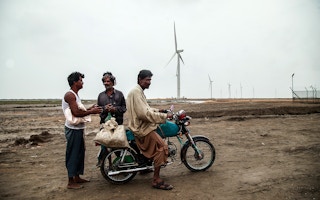The Asia-Pacific region is at a turning point in its energy trajectory. The energy solutions that have fuelled growth in the region over the past few decades are no longer compatible with the sustainable development aspirations of our nations and their people.
In transitioning to a new era of sustainable energy, policymakers across the region face complex decisions. Supplies must be secure and affordable, and they must fill the energy access gap which leaves half a billion people across the region without access to electricity.
At the same time mitigating the local impacts of energy generation and use will be vital in resolving problems such as the air pollution choking our cities and the global consequences of greenhouse gas emissions causing climate change. Solutions exist, but only through regional cooperation and integration can Asia and the Pacific transition to sustainable energy in time to meet the ambitious 2030 Agenda for Sustainable Development and its Goals.
Countries have committed to moving towards a more diverse and low carbon energy mix through the 2030 Agenda and the Paris Agreement on Climate Change.
However, fossil fuels stubbornly remain a major part of the regional energy mix, making up three-quarters of electricity generation. Unless the region’s countries work together to accelerate the incorporation of sustainable energy into their strategies, business-as-usual approaches will result in a continuation of fossil fuel use and associated impacts.
While some countries suffer from energy shortages which limit their economic and social development, others enjoy energy surpluses, such as hydropower and natural gas. Trading these resources through new cross-border power grids, drawing on renewable energy when possible, as well as gas pipeline infrastructures, can open up enormous opportunities for both economic growth and decarbonisation.
The energy technology renaissance already underway in some countries is playing a vital role in the transition. New technologies are reducing the cost of clean energy and renewable power. Smart grids and electric vehicles are rapidly gaining market share.
Since 2010, the cost of solar power generation has declined by 58 per cent, with the cost of wind power down by one-third. The International Renewable Energy Agency projects cost reductions of 59 per cent in solar power and 12 per cent in wind power within 10 years, edging below fossil fuel electricity costs in most Asia-Pacific countries.
Advances in long-distance power transmission technologies enable the linking of renewable energy resource-rich areas such as the Gobi Desert, Central Asia and far eastern Russia, with distant population centres. Asia-Pacific has emerged as an engine for clean energy, both as a manufacturing centre for renewable energy technologies and as the leading region for deployment, with US$160 billion invested in renewables in 2015.
On the demand side, energy efficiency technologies have an important role to play in the energy transition. Better energy efficiency is a key driver in decoupling energy use and GDP growth in many economies.
With 15 per cent of the world’s electricity consumed by lighting, efficient LED lighting technology, which consumes up to 85 per cent less energy, will make substantial savings. Energy storage technologies for vehicles and power applications have also leapt ahead, offering flexibility in power usage and balancing variable electricity generation from renewables. Here again, regional cooperation, technology transfer and south-south collaboration will play a vital role in the transition.
Despite these encouraging developments, the success of the energy transition will require sustained commitment at national and regional levels through better policies, incentives and allocation of investments.
The inertia of the existing energy sector is considerable, with its long-lived assets and entrenched institutional arrangements. Regional cooperation, through sharing of policy experiences, building capacity and mobilising finance can play a significant role in assisting countries to implement their own energy sector reforms and capture the many co-benefits.
The importance of regional energy cooperation is evident in the transboundary nature of many prominent energy challenges – improving regional energy security, managing air pollution and establishing cross-border energy infrastructure.
ASEAN, South Asian and Central Asian countries as well as China, Russia and Mongolia are already embracing cross-border energy connectivity. Initiatives such as the CASA 1000 and the ASEAN Power Grid will allow low carbon energy from gas, hydropower, solar or wind to be traded across borders. Long-term regional dialogue is required to further develop these complex and infrastructure-intensive initiatives.
“
Unless the region’s countries work together to accelerate the incorporation of sustainable energy into their strategies, business-as-usual approaches will result in a continuation of fossil fuel use and associated impacts.
Connecting countries, finding regional solutions and promoting regional standards and guidelines have been at the core of the work of the United Nations Economic and Social Commission for Asia and the Pacific (UNESCAP) for the past 70 years.
We recognise the need for regional energy cooperation, and with the support of our member States established an intergovernmental Committee on Energy that will meet for the first time in Bangkok, 17-19 January.
Through the Committee, countries will help to map out key regional energy solutions for the region such as accelerating uptake of renewables and energy efficiency, establishing cross-border energy connectivity, promoting regional approaches to energy security, and providing modern energy access throughout the region to ensure a sustainable energy future for all.
Through regional cooperation and integration I am confident that the countries of Asia-Pacific region can transform their energy trajectories to better serve their people, the region and the planet.
Dr Shamshad Akhtar is a Under-Secretary-General of the United Nations (UN) and the Executive Secretary of the Economic and Social Commission for Asia and the Pacific (ESCAP).











